
S.
Stroock & Co was
founded by Samuel Stroock who left his home in Tennessee in 1866 and
trekked to New York to begin a small business in a loft, producing
felt and carriage robes, or lap blankets, for the horse-drawn carriage trade. He
eschewed the poor standards and practices of the times when "caveat emptor"
was the by-word, and insisted upon offering only the highest quality;
a novel approach that quickly led to "Stroock
Carriage Robes" being synonymous with the best.
Following on from
blankets for horseless carriages, the company moved with the times by making them for the
new but still airy horseless carriage, the motor vehicle.
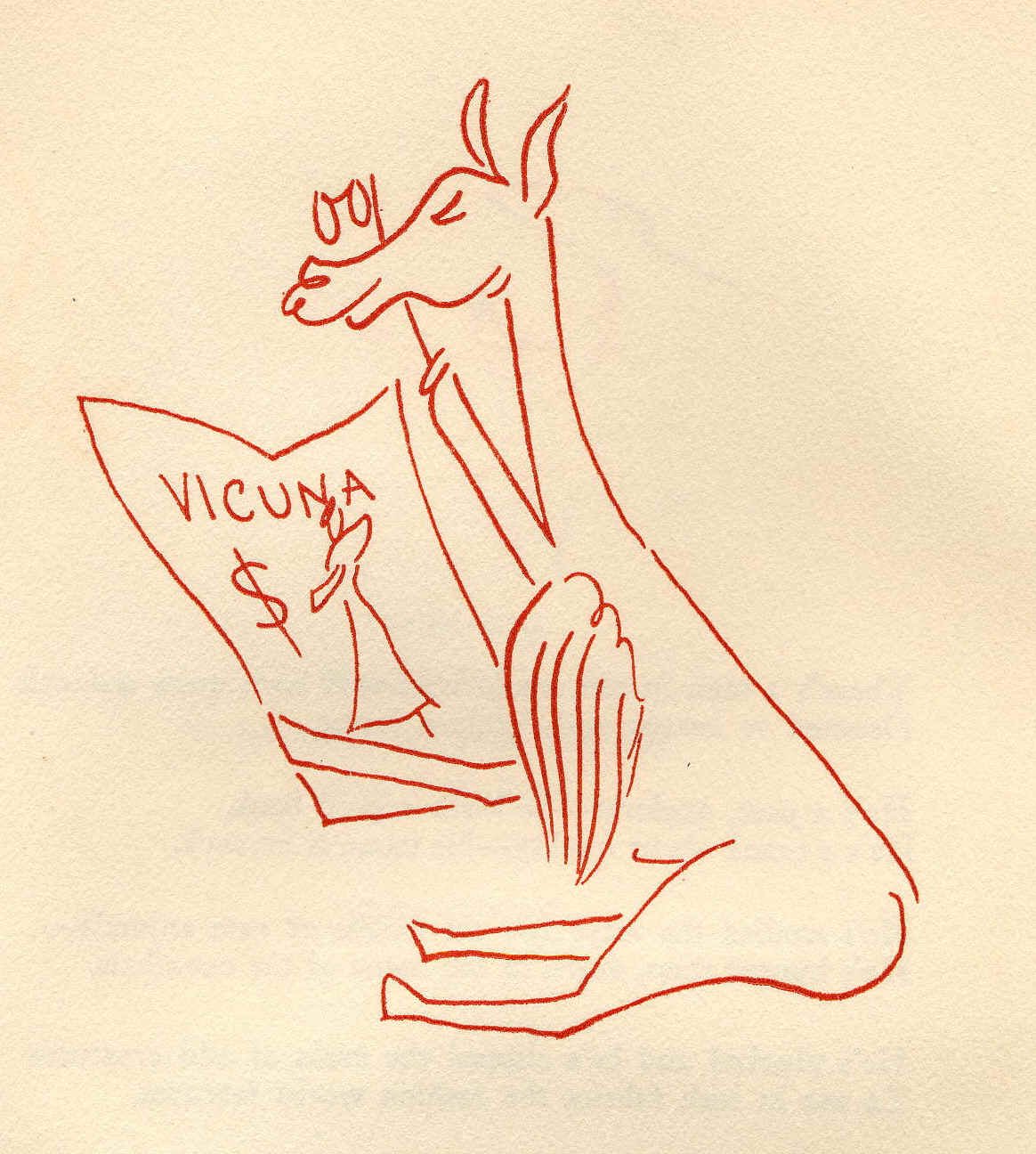 Samuel Stroock died in
1883 but the company remained in the family and was guided through World War
I by Louis Stroock when
it made army blankets and military uniforms. Louis's brother Joseph opened
a sister company Stroock Felt, producing felted material.
Samuel Stroock died in
1883 but the company remained in the family and was guided through World War
I by Louis Stroock when
it made army blankets and military uniforms. Louis's brother Joseph opened
a sister company Stroock Felt, producing felted material.
It was to meet this
expansion that the family built a new factory at Newburgh-on-Hudson, New
York State, and it was here that the company was to grow and its tall
chimney stack become a feature of the Newburgh landscape for several
decades.
When Louis Stroock
retired, his son Bertram took the company reins and expanded into luxury
fashion fabrics. In 1919 B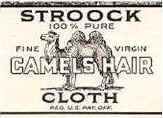 ertram produced the first 100% camel cloth. Sold on the slogan
"warmth without weight" and with its delicate natural colour,
it became an instant hit. Although all their carriage blankets had
carried the Stroock label, their camel cloth was the first fashion
fabric to do so and the name quickly became recognised in the luxury
fashion world as a lead brand.
ertram produced the first 100% camel cloth. Sold on the slogan
"warmth without weight" and with its delicate natural colour,
it became an instant hit. Although all their carriage blankets had
carried the Stroock label, their camel cloth was the first fashion
fabric to do so and the name quickly became recognised in the luxury
fashion world as a lead brand.
By 1923 company profits
had been lifted from an annual $6,000 to in excess of what was for the
time, a magical $1m.
In a most unusual move
yet one which somehow befits this unusual and innovative company, when
Bertram's father died in 1935, his mother Pauline decided it was time
Bertram's younger brother Sylvan "deserved a chance" to run
the company. Having steered Stroock & Co into a multi-million dollar
organisation with offices on New York's Fifth Avenue and with mills at
Newburgh, NYS, Bertram was not well pleased, despite being able to
retire a multi-millionaire at just 44 years of age.
Sylvan was equally
enthusiastic about the unusual, rare and luxurious fabrics the
company was developing. Following on from their success with camel hair
and cashmere, Sylvan followed his brother in looking to the Andes for
inspiration and the company's expansion continued apace. Fine fabrics
were created not only from the four members of the camelid family -
llama, vicuna, alpaca and guanaco - but even
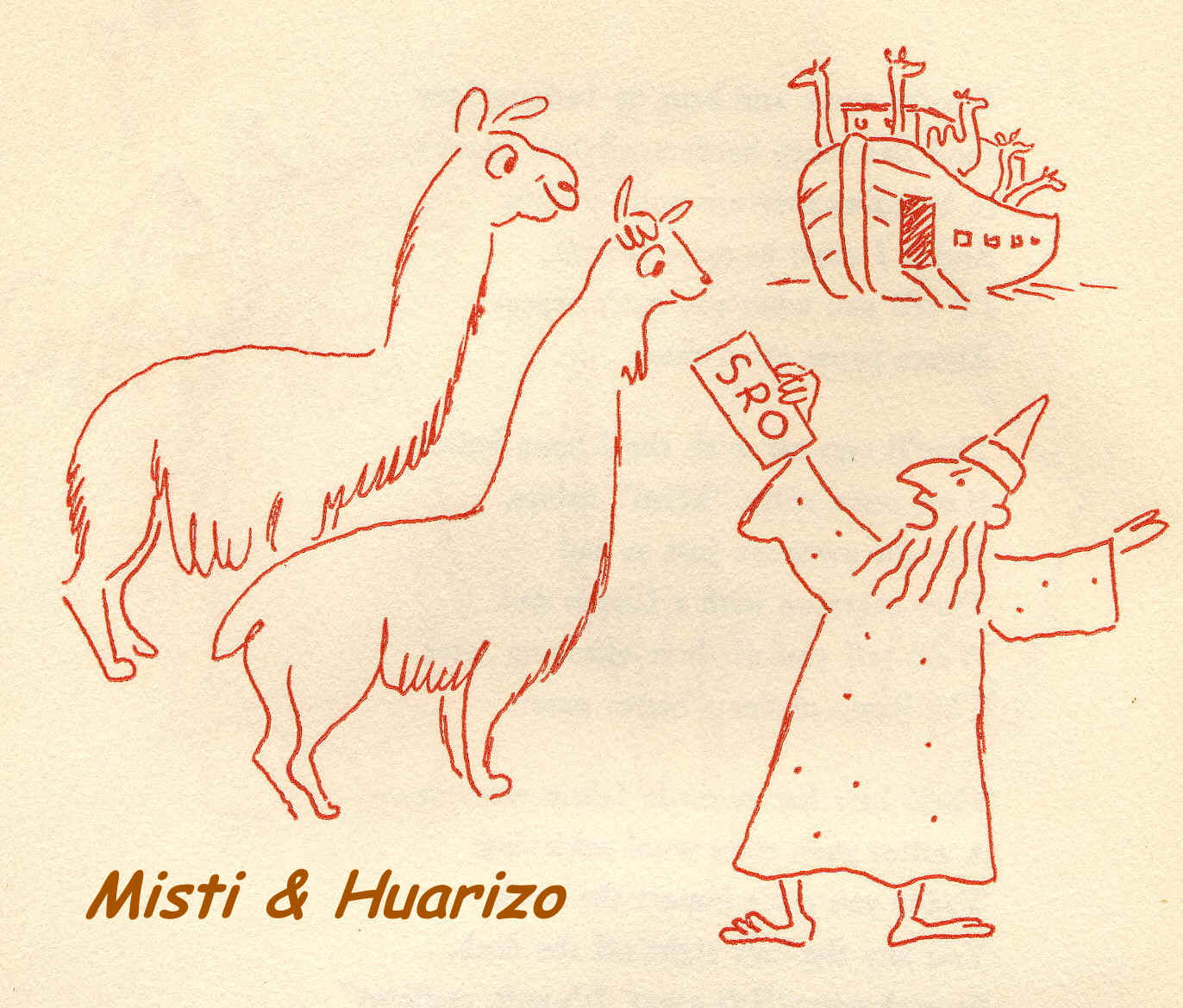 Huarizo and
Misti, the
crosses of male llama/female alpaca and male alpaca/female llama
respectively, that today are completely unsung. .
Huarizo and
Misti, the
crosses of male llama/female alpaca and male alpaca/female llama
respectively, that today are completely unsung. .
Realising the uniqueness
of their product, Sylvan Stroock set about marketing to and educating
prospective owners of their creations with a series of small books
he wrote himself. They included "The Story of
Vicuna", "The Story of Camel Hair" and "Llamas and
Llamaland".
A further book, "Stroock's
Animal Kingdom", was given away to clients and tells in rhyme and
cartoons the story of Sylvan's quest to manufacture great cloths from
great fibres...
In Sylvan's book "Llamas and Llamaland", written in 1937, one
chapter is titled
"LLAMA CLOTH -
A Lost Art, Retrieved"
in which he
writes... "It was not until
1921, after years of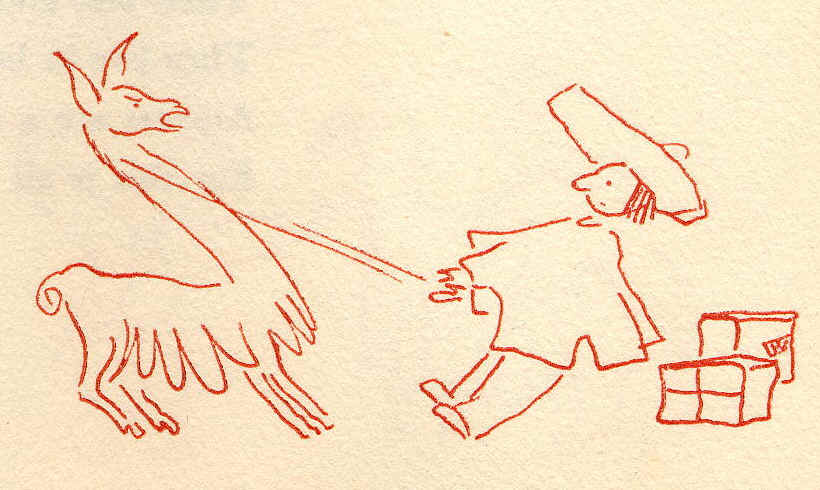 consistent effort and experiment, that the
technicians of S.Stroock & Co, Inc, developed a successful method of
weaving 100% llama cloth - a signal and an unchallengeable achievement
recognised by the textile industry throughout the world."
In that
chapter he continues: "Through their own inherent qualities of beauty
and appearance, llama fabrics have won a permanent and distinctive place
in the world of fashion; and the stylist is now specifying their use
wherever a material with characteristics of beauty of drape, natural
lustre, and fineness of texture is required."
consistent effort and experiment, that the
technicians of S.Stroock & Co, Inc, developed a successful method of
weaving 100% llama cloth - a signal and an unchallengeable achievement
recognised by the textile industry throughout the world."
In that
chapter he continues: "Through their own inherent qualities of beauty
and appearance, llama fabrics have won a permanent and distinctive place
in the world of fashion; and the stylist is now specifying their use
wherever a material with characteristics of beauty of drape, natural
lustre, and fineness of texture is required."
"Llamas and Llamaland" ends with the paragraph "Deep is the gratitude
the world owes to Llamaland... Land of the Incas... of glorious
antiquity... for its charm and call to adventure... for the secrets of
its artistry... and for the lovely fleeces of the llamas which through
modern, scientific manufacturing skill, are expressed in all their
magnificence in the finished fabric. Here indeed is a lost art,
retrieved."
In the 1930s and 1940s
S.Stroock & Co became a giant in the fashion world of luxury fibres.
Their Vicuna coats and jackets represented the finest clothing available
in the world. Their llama fabrics were woven into fine men's suiting
materials that were marketed exclusively through the Hickey Freeman
chain under the label "Llamando"..
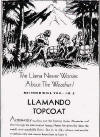
Sylvan's prophecy of
llama fabric having a permanent place in the world may have been off the
mark for he could not predict that his work and techniques might be lost
to the vagaries of fashion and a second world war.
Yet it is of particular
interest to us that when Llamas started to become popular in North
America and in Europe in the 1980's, the opportunities presented to
produce fabrics from llama fibre were effectively thought of as
"new" and "experimental" possibilities for the
future - the development of a previously undiscovered, unappreciated
fibre. An assumption that was quite wrong as Stroock's achievements,
from some
three quarters of a century earlier, demonstrate...